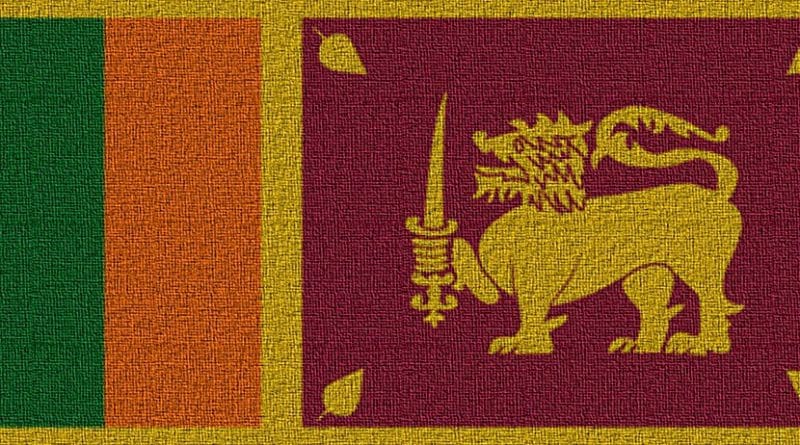Recent Anti-Muslim Assaults In Sri Lanka: Facts And Falsehoods – OpEd
In the local government elections of 2018, the ruling political parties, United National Party and Sri Lanka Freedom Party did not achieve the expected victory. The political alliance of former President Mahinda Rajapaksa won the most of local government bodies all over the country. It gave a boost to the Sinhala-Buddhist nationalist forces like Rajapaksa ally. On the other hand, the election results had created internal crisis within the national government.
In the midst of the political turmoil that emerged after the local government election, the agenda of Sinhala Buddhist nationalist forces began to work well. As the initial phase, these forces attacked a mosque and several business establishments in Ampara town in the eastern province. The violence was unleashed by mobs, claiming that sterilizing pills are used in the Muslim hotels. In particular, fraudulent allegations were made by some Sinhalese youths that the sterilizing pills are mixed in a food called ‘Kothurotti’ which is sold in a Muslim hotel in Ampara.
The above incident was well-planned and provocative without any proven reasonable grounds. It is noteworthy that a number of doctors have been told that long-term sterilizing pills have not yet been discovered by the medical world and they have also demonstrated the fact that any efficient pills in the hot foods like ‘Kothurotti’ will be inactive in any circumstances. In this regard, the Government report later confirmed that the sterilizing content was not used in the particular food.
One of the reasons behind this incident is the deliberate intent of the violence that has been planned against Muslims. Any argument may be legally permitted when it is found in any of the disadvantages substances within the food for the sake of an argument. Otherwise, the issue should be limited to those who are related to the particular business man. But something else happened.
A number of shops belonging to Muslims in the city were attacked on the planned basis by claiming that there was no one. One only religious worship place of Muslims in the city was subjected to severe attacks. During this time many Muslim vehicles were burned down and many of the Muslims were injured by indiscriminate attacks.
Following the Ampara incident, the Sinhalese mobs unleashed the violence against Muslims in Digana area in the central province. The immediate cause of this violence was the attack on Sinhalese youth from Muslim youths who were drunk. However, the particular incident should be dealt in the legal ground. But Sinhalese mobs used the incident for their well-planned propaganda against Muslims. After the death of Sinhalese youth, mobs destroyed Muslims’ mosques, business establishments and homes in Digana and surrounding areas. A Muslim youth was also killed by these attacks and many crores of valuable assets were wrecked. Although the security forces were invited to control the incident, they did not take any prompt action.
The above hazardous situations was immediately spread out to other parts of the Kandy district and resulted in a number of attacks against Muslims. It is noteworthy to mention that all these raids were in place when the police curfew was in force. In the midst of these bouts, the people lost the confidence in the government forces and the government was accused of failing to act fast enough to protect the Muslim minority. The pressures on the government were also increased. As a result, the government declared the state of emergency, imposed ban on social media and arrested ten suspects behind the wave of anti-Muslim attacks.
This violence is not the first time in the case of Sri Lankan Muslims. There have been many unpleasant incidents in the past. All these incidents are caused by the rapid increase in anti-Muslim sentiments among the section of Sinhala Buddhist hardliners. From the beginning, these forces are making a number of false allegations on several matters such as halal food, Muslim women’s dress code, slaughtering animals, Muslims’ population growth and Muslim students’ entrance to the Law College. In fact, there are many factors behind the above accusations such as Islamic revitalization, Islamophobia, symbolic Islam, ethno-religious nationalism and external interests.
Even though the country has presently returned to so-called normalcy, the deep rooted factors that behinds to the above incidents are not yet addressed. In this case, the government must take immediate attention and need to work on the long term plans. It is in fact that this is the high time for religious, political and community leaders to initiate inter-faith dialogue at all possible levels to achieve sustainable peace and reconciliation among ethnic communities of the nation.
*M.A.M.Fowsar, Lecturer in Political Science, Department of Political Science, South Eastern University of Sri Lanka. E-mail: [email protected]


This is a very poor attempt to put the blame on Rajapaksa and the new party regarding recent violence. The truth is Muslims were again gravitating towards the Rajapaksas and the recent violence would simply push the Muslims into politics of ethnic ghettos. If anyone wanted to stop the rajapaksas, this violence gave them opportunity.